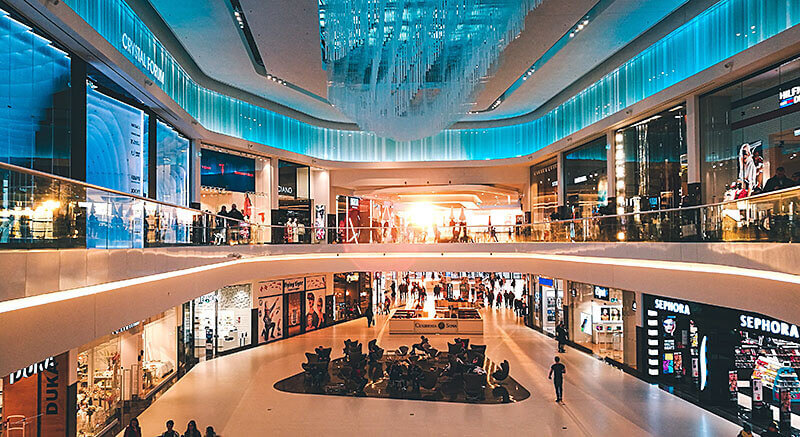March 26, 2020
Three ways malls and department stores can survive the growing number of COVID-19 lockdowns
 Many states are closing malls, department stores and brick-and-mortar shops to prevent the spread of COVID-19. (Stock image from Unsplash)
Many states are closing malls, department stores and brick-and-mortar shops to prevent the spread of COVID-19. (Stock image from Unsplash)
WEST LAFAYETTE, Ind. — Many states are closing nonessential businesses and urging residents to shelter in place to prevent the spread of COVID-19. The measures are forcing malls, department stores and brick-and-mortar shops – already hard-hit by closures, bankruptcies and dwindling business – to transition to online-only sales and experiment with alternative delivery options, such as curbside pickup.
Mohammad Rahman, an associate professor in the Krannert School of Management at Purdue University, has analyzed millions of online transactions, reviews and other data to study how retailers can better manage their physical and digital storefronts, known as omnichannel retailing. He said there are three ways big-box stores can find silver linings as they move online amid a growing number of lockdowns.
 Mohammad Rahman, an associate professor in the Krannert School of Management at Purdue University, has analyzed millions of online transactions, reviews and other data to study how retailers can better manage their physical and digital presences, known as omnichannel retailing. (Purdue University photo/John Underwood)
Download image
Mohammad Rahman, an associate professor in the Krannert School of Management at Purdue University, has analyzed millions of online transactions, reviews and other data to study how retailers can better manage their physical and digital presences, known as omnichannel retailing. (Purdue University photo/John Underwood)
Download image
Digital strategy: Rahman said many consumers visit physical stores because they perceive high levels of trust in the seller, returns, and after-sales support compared with shopping online, known as online disutility costs. Retaining these customers is crucial during a massive move to online shopping and curbside pickup, Rahman said.
“This is forcing an experiment on people to use these services they would not have used in normal circumstances,” he said. “You want to make sure these are the customers that stick with your brand and your store. You want to make sure you can still deliver on some of their experiences.”
Customer service: Stores should emphasize customer experience and personalized service, such as using digital tools to help shoppers find their size of clothing or desired product, and relaxing return and shipping policies, he added.
“This is a time when you really manage customer expectations and experience well,” he said. “Customers are going to be more forgiving than normal times. This is your time to convince an Amazon Prime member that you can do as well or better. It’s a challenging but opportune time for businesses with a good omnichannel strategy.”
Digital traces: When people shop online, they leave behind bits of information about themselves, such as their location, their interests and other data, known as digital traces, Rahman said.
“Stores that didn’t have a lot of digital traces because of their physical traffic and interactions – think of Kroger or Macy’s or many other stores – now have a lot of data because shoppers are choosing to pick up items or have them delivered. This often means you know the address of these customers, the kinds of things they’re ordering and other traces you might be able to utilize in the future that you didn’t have access to in the past.”
More information: Rahman is a faculty affiliate in the Purdue University Research Center in Economics.
About Purdue University
Purdue University is a top public research institution developing practical solutions to today’s toughest challenges. Ranked the No. 6 Most Innovative University in the United States by U.S. News & World Report, Purdue delivers world-changing research and out-of-this-world discovery. Committed to hands-on and online, real-world learning, Purdue offers a transformative education to all. Committed to affordability and accessibility, Purdue has frozen tuition and most fees at 2012-13 levels, enabling more students than ever to graduate debt-free. See how Purdue never stops in the persistent pursuit of the next giant leap at purdue.edu
Writer: Joseph Paul, paul102@purdue.edu (working remotely but will provide an immediate response)
Source: Mohammad Rahman, mrahman@purdue.edu (also available for phone and Skype interviews)
Note to Journalists: A retail stock image and photograph of the professor is available to journalists via Google Drive.

